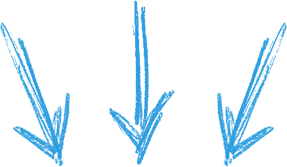Going gluten free is the latest health craze these days to avoid the dreaded Wheat Belly!
If you seriously want to lose the Wheat Belly did you know that many of these so called “Healthy” Gluten free foods can actually cause weight gain and a flabby belly.
Unless you carefully analyze the food label sooner or later you won’t be fitting into your skinny jeans!
Let me explain…take for instance gluten free bread, cookies, cake and pasta. These common foods have all been made wheat free.
The are also the most common foods we tend to replace!
Although we may think these foods are healthy they contain ingredients that will lead to a flabby belly.
They usually contain an ingredient derived from corn such as corn flour or maize.
Unless you are a nutritionist most of us would not think twice about this humble ingredient.
But the fact is your body turns the corn into sugar which causes an insulin spike making you feel hungrier and start craving more junky food. This is not what we want!
If you give up eating gluten the right way, by cutting out refined carbs and eating more fresh produce, lean proteins, and gluten-free whole grains, you may very well feel better and have more energy, because you’ll be eating fewer processed, high-calorie foods. Here are four more tips that healthy gluten-free and weight loss diets share.
Focus on nutrient-dense flavor. Some of the healthiest whole foods are delicious and naturally gluten free: fruits, vegetables, fish, poultry, low-fat dairy, beans, seeds, and nuts. Start with high-quality ingredients to make simple, tasty meals. Top a salad with grilled chicken breast, shaved Parmesan, and toasted walnuts; blend up an almond milk and banana smoothie; or make a bean-based, pasta-free minestrone.
Choose healthier packaged foods. Gluten-free packaged foods enjoy a “health halo” that not all deserve, so read labels carefully. Avoid products that list refined white rice flour, potato starch, tapioca flour, or corn as the first (and second and third) ingredient. Look for those made with more wholesome flours such as almond, amaranth, quinoa, and millet, as well as other nutritious ingredients, including ground flaxseed, hemp seed, chia, and nuts.
Eat a balanced breakfast. People who eat a protein-rich breakfast are less likely to indulge in high-calorie snacks later in the day, according to a 2013 study published in The American Journal of Clinical Nutrition. So don’t just reach for a morning bowl of high-sugar cereal, whether it has gluten or not. Instead, accompany an egg with sautéed kale. Or cook certified-gluten-free oats and top with plain Greek yogurt and fruit.
Ditch sugary foods and beverages. Like refined carbs, these foods not only load you with empty calories, but they also cause blood sugar spikes and dips that can increase feelings of hunger and cravings, according to another 2013 study. Avoiding these foods may make it easier to choose better foods that support weight loss. The bottom line: Make health, not weight loss, your primary goal. And keep in mind that if you’re sensitive to gluten, switching to a healthy gluten-free diet might cause you to gain appropriate weight because your body will better absorb nutrients as it heals, says Alice Bast, president of the National Foundation for Celiac Awareness.
For more easy tips and simple cheats that will help you with achieving a flatter belly enter your details to download a complimentary copy of my Gluten Free Flat Belly Diet Cheat Cheats. Get Your Slim Belly Cheat Sheets Now
